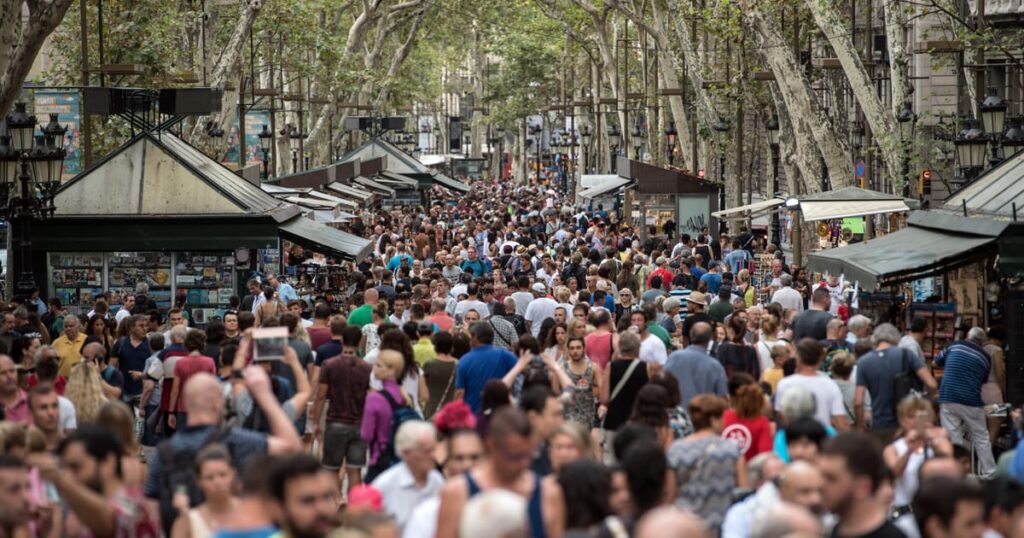Options include building more desalination plants or drawing water from distant rivers, both of which are controversial: Barcelona was forced to raise water prices earlier this year because of the costs of desalinization, and a proposal to transfer water from the Ebro was rejected by the neighbouring Aragon region earlier this year.
Carrera’s preferred option is to create huge basins near urban areas that would capture water during periods of heavy rainfall and allow the ground to slowly absorb it, replenishing dry aquifers.
But for now, the government’s focus is on containing the drought emergency until the end of summer.
To reduce water use by tourists, Catalan authorities have launched an awareness campaign, putting up posters around Barcelona urging visitors to “save water during your stay.”
At the same time, the government insisted that tourists should stay away, and allowed the pools to be filled with water as long as they were classed as “climate refuges” to escape the heat.
Asked about the impact of tourism, Deputy Mayor Bonet diplomatically said that while hotel water consumption in Barcelona has fallen sharply in recent years, the huge gap between water use by locals and tourists needed to be closed.
“The optimal scenario is it doesn’t matter who is using the water, whether they’re a local or a tourist,” she said, adding that tourist consumption also drops to less than 100 litres.
But, she acknowledged, “That’s not the reality right now. We need to address that and address it more quickly than we have in the past.”


